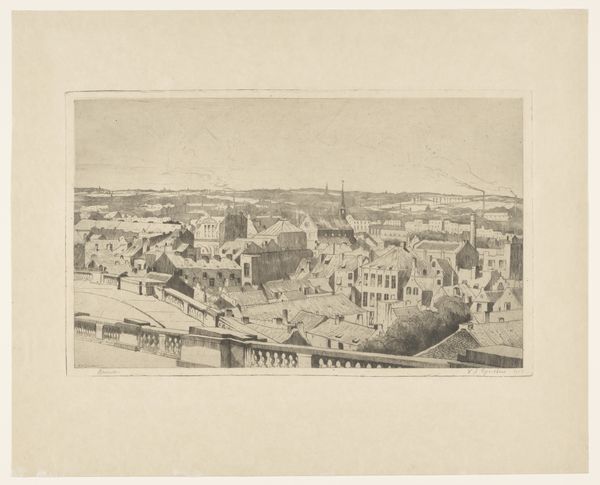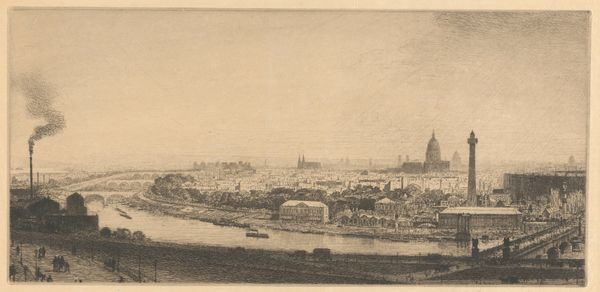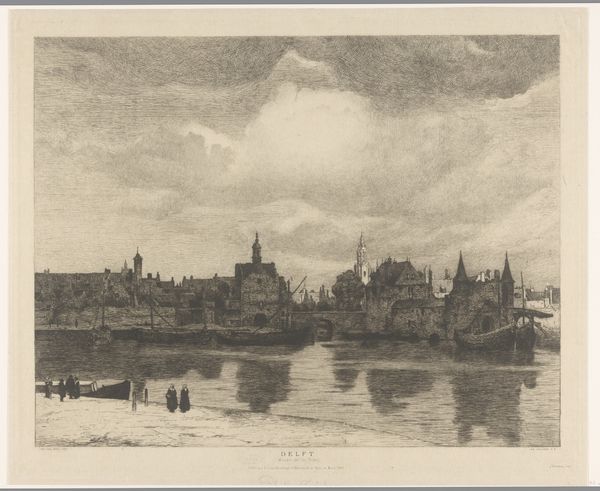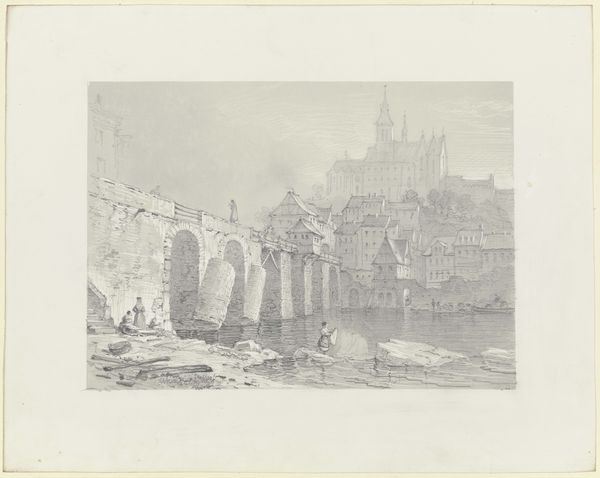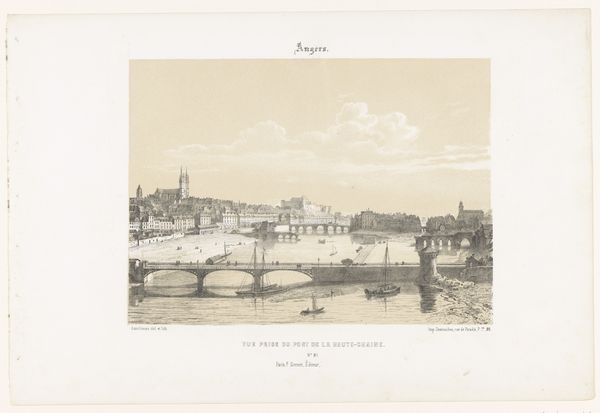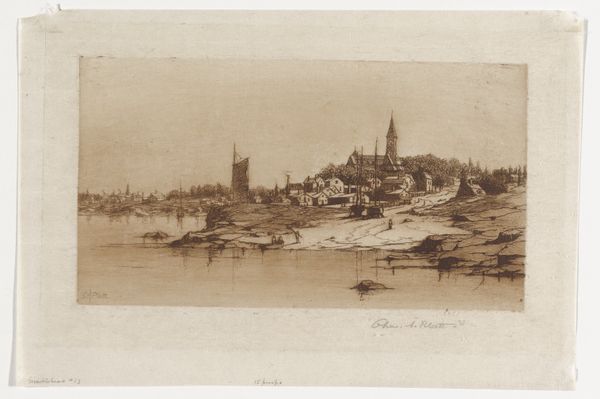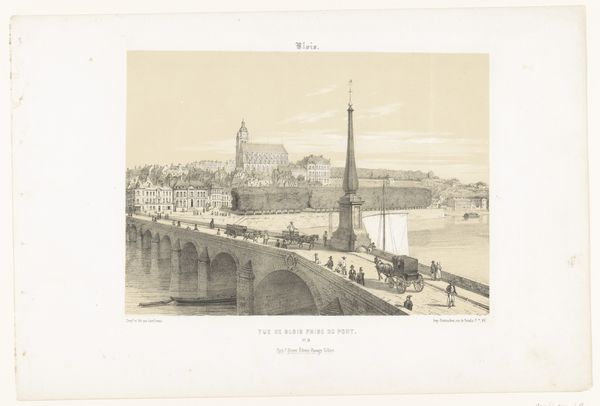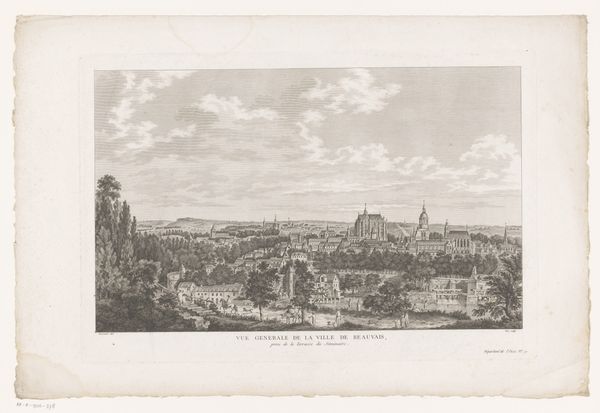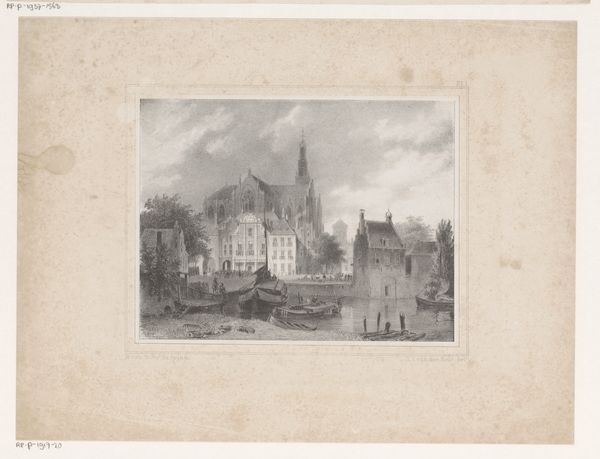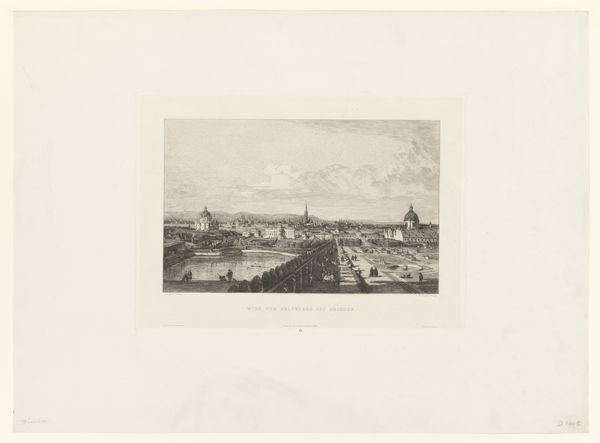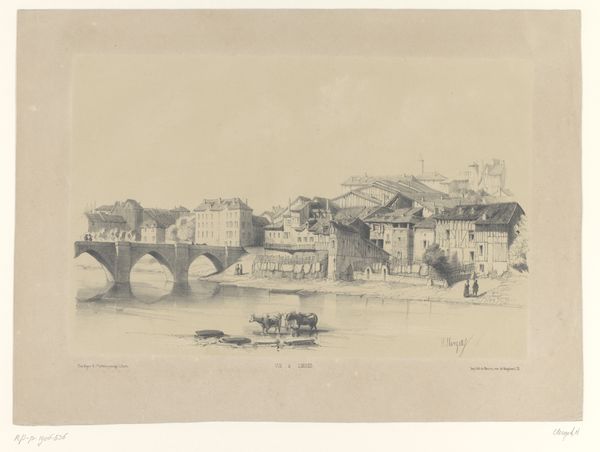
print, etching
# print
#
etching
#
landscape
#
cityscape
#
realism
Dimensions: height 400 mm, width 565 mm
Copyright: Rijks Museum: Open Domain
Curator: Eugène Cicéri's "Zicht op Bern," or "View of Bern," created in 1859, offers a meticulously rendered cityscape. It’s an etching, held here at the Rijksmuseum. Editor: It has such a quiet, almost sepia-toned stillness to it. The architectural detail is impressive, but I’m drawn to how much the boats add, punctuating the scene with these small signs of human activity. What statement might this artwork be making about Bern? Curator: In terms of socio-political statement, the artwork presents a perspective, not just a view. Consider that printmaking during the mid-19th century served as a crucial means of disseminating imagery to a broad audience, far beyond the elite circles that historically controlled art consumption. Cicéri is literally and figuratively offering Bern to the masses. Editor: And the medium itself—etching—allows for such fine lines. It reminds us that the production process wasn’t merely about documentation; the artist meticulously chose a method that highlights the precise forms and structures. This almost becomes an exercise in cataloging, showing Bern as a testament to industry and architectural planning. The emphasis is definitely on craft. Curator: That emphasis echoes throughout its reception, I think. Cityscapes at this moment were often commissioned or created as emblems of civic pride and identity, circulated as visual shorthand for a place's significance. Etchings made places accessible as cultural commodity. This artwork tells us about Bern's projection of its image and about the reach of this image at a historical moment of nation building in Europe. Editor: I hadn't considered the etching’s social purpose, so that really contextualizes my understanding of it. Now, when I consider this etching, I appreciate not just the beauty, but how its construction allowed it to perform a crucial communicative role, allowing the rest of the world to imagine Bern. Curator: Precisely. Viewing an image of a place enables the construction of an understanding, solidifying its political role in visualizing community.
Comments
No comments
Be the first to comment and join the conversation on the ultimate creative platform.
